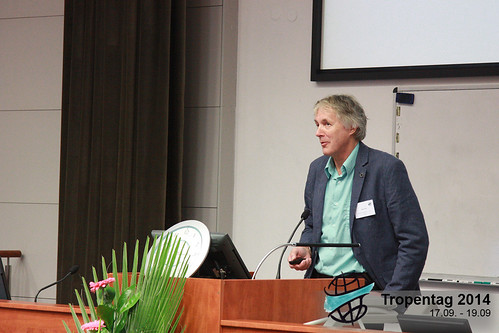stakeholders
Beyond the Conference: Research for Real Impact
Thu, 09/25/2014 - 08:27 — Pin Pravalprukskul
Participants of Tropentag 2014, I hope you feel accomplished. With the wealth of excellent and groundbreaking work presented this year, it looks like we’re indeed one step forward in “bridging the gap between increasing knowledge and decreasing resources”. As we settle back in our home universities and institutes to catch up on work and resume our routines, it’s also perhaps a good time to reflect on what happens next. Conferences are great, but why end at the conference?


Visual Problem Apraisal - the Voice of the voiceless
Tue, 10/09/2012 - 13:45 — De-Registered User
Dr. Loes Witteveen from Wageningen University, Netherlands introduced the participants to a methodology that can be used to engage stakeholders highlighting the complex issues in a social dialogue space.
 The Visual Problem Appraisal (VPA) methodology is a film-based learning environment. This methodology is being tested at the University where currently students find it a safe simulation environment where the the student interact with unfamiliar stakeholders. This is crucial in formulating an understanding of how systems work. The students immersed themselves in the process and it represented a strong simulation of reality and students felt like they were travelling along with the various participants (interviewees).
The Visual Problem Appraisal (VPA) methodology is a film-based learning environment. This methodology is being tested at the University where currently students find it a safe simulation environment where the the student interact with unfamiliar stakeholders. This is crucial in formulating an understanding of how systems work. The students immersed themselves in the process and it represented a strong simulation of reality and students felt like they were travelling along with the various participants (interviewees).
 The Visual Problem Appraisal (VPA) methodology is a film-based learning environment. This methodology is being tested at the University where currently students find it a safe simulation environment where the the student interact with unfamiliar stakeholders. This is crucial in formulating an understanding of how systems work. The students immersed themselves in the process and it represented a strong simulation of reality and students felt like they were travelling along with the various participants (interviewees).
The Visual Problem Appraisal (VPA) methodology is a film-based learning environment. This methodology is being tested at the University where currently students find it a safe simulation environment where the the student interact with unfamiliar stakeholders. This is crucial in formulating an understanding of how systems work. The students immersed themselves in the process and it represented a strong simulation of reality and students felt like they were travelling along with the various participants (interviewees).
Currently the team has provided a VPA skill box that includes 25 - 30 filmed stakeholder interviews, 2 documentaries with an introduction and a conclusion, a facilitator’s guide workbook, and powerpoint templates.




